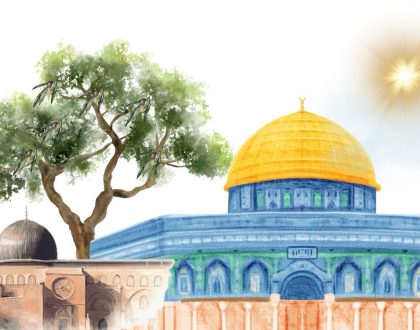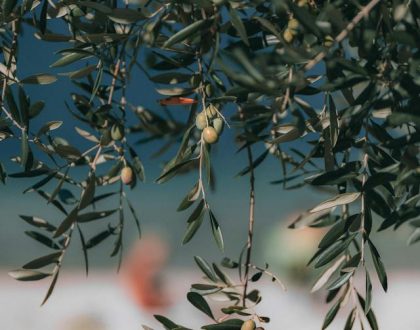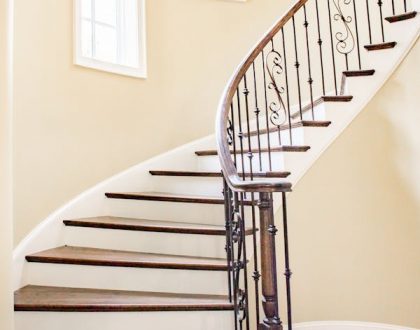Muslims of the World
by Hana
Works best when delivered alongside a slideshow of example images
What do you imagine when you think of a Muslim woman? As of last Saturday, this is what Google thinks, and I would guess that most of you probably thought of something similar. But how many of you considered someone who looks like this? Or this? Or even these? [photos of white/European/non-hijabi women]
Islam is the second largest religion in the world and the fastest growing; in 2010 there were 1.6 billion Muslims – nearly a quarter of the world’s population – and six years later there are many more, spread all across the globe. These pictures show what people tend to assume represents the majority of Muslims: in other words, Arabs, particularly those living in Saudi Arabia and Dubai. But actually, if you look at a map, this only represents women from this tiny section of the world – i.e. there are more non-Arab Muslims than there are Arab ones in the world. They could be Indonesian or Chinese, as well as African, or European.
As they come from all over the world, their sense of style will also be different. Not all Muslim women wear the same severe, black, headscarves. Of course, not all Muslim women wear hijab at all, but among the majority who do, styles vary hugely around the world. This is a short video highlighting different cultural styles.
As you might have noticed at the beginning of the video, the Turkish style is very distinctive, knotted at the neck with the back often lifted high and away from the head.
By contrast, Indonesian women wear their scarves much longer, loose and flowy, often in pastel colours.
On the opposite end of the spectrum, African Muslims often go for brightly coloured and patterned fabrics, tied in a turban-like fashion, although this doesn’t cover the neck.
Different again, Afghan women tend to cover their faces. However, unlike the Arab face-veil, using several pieces of black cloth, Afghan styles lean more toward lightly-coloured simple one-pieces, with a hexagonal gap to see through, covered by netting.
And it’s not just hijab styles that vary. Islam requires women to dress modestly, however it does not prescribe the exact clothes that you wear, allowing different cultures to express their fashion differently.
In Pakistan, women wear the shalwar kameez – loose trousers and a long top, usually accessorised with a scarf. Despite what the media would have you think, the Pakistani fashion industry is thriving, with bigger brands like Khaadi even having their own shop here, in Westfield.
Indonesian women’s national dress is the kebaya – a blouse fastened with a brooch – which is worn with a sarong. However, nowadays this is only really worn on formal occasions, with western clothes more common for every-day.
In many regions, women have found it simplest just to put on a long, loose outer garment when going out, allowing them to wear whatever they like at home.
Of course, the most well-known example is this, the abaya. However, just like the black headscarf and face-veil, this is most commonly worn by Saudi and Dubai Arabs, while other regions have their own traditional clothes. By the way, something else you may not know is that under their abayas, Arab women tend to be very fashionably dressed by western standards, often in skinny jeans and designer clothes.
The Moroccan take is the djellaba, which is actually worn by both men and women. Though similar, these tend to be coloured and patterned, compared to the usually black abaya, and traditionally include a pointed hood to provide protection from hot days and cold nights in the desert.
In Sudan, women wear short dresses covered by tobes, simply long pieces of material wrapped around the entire body, something like a sari.
Nowadays, with western influences diluting other cultures, it’s often only at weddings that national clothes are really displayed. Women in some majority Muslim countries, such as Turkey, Yemen and Iran, traditionally have white wedding dresses similar to in the west.
By contrast, Nigerian Muslim brides choose any bright colours they like, and Pakistani bridal wear is similarly brightly coloured. It can be of any colour but traditionally tends to be red and gold, accessorised by lots of heavy jewellery.
Chinese brides also wear red and gold, as do brides from Kazakhstan who, in addition to the usual fabrics – silk, satin and brocade – wear a traditional fur headdress and sometimes veil.
But there’s more variation in international Muslims than just their clothes. Even architectural styles are different. Though most mosques consist of the traditional dome-and-minarets, that doesn’t mean they all look alike.
Turkish mosques tend to be built in the Ottoman style, often having flatter, tiered domes, ranging from one layer in small mosques to as many as four or five in big city mosques.
Arab mosques have taller, rounder domes with defined peaks. These tend to have lots of arches as well. One famous one is Sheikh Zayed Mosque in Abu Dhabi, whose lavish interior involves mainly marble inlaid with pearl and other precious stones.
Which country do you think this is from? Maybe Morocco? Egypt? Tunisia? In fact, this is the courtyard of the Grand Mosque of Paris, built in 1926, in thanks to the French colonial Muslims who fought in World War 1. Another mosque influenced by France is Great Mosque of Djenné, in Mali, a former colony – hence the unusual style with no dome or minaret.
Chinese mosques break the mould completely. Taking inspiration from Buddhist temples, these often mirror traditional pagodas, with sloping, gently curved rooves in multiple layers.
In the Quran, God says that He created us as different nations and races so that we could find common ground and our shared humanity though our differences. Despite all our many differences in culture, food and dress, ultimately beneath our clothes we are all the same. And no matter what their country of origin, Muslims essentially believe the same thing. They all believe in One God, and the message brought to them by the Prophet Muhammad (peace be upon him). They all pray in exactly the same way, in the same language, in the same direction, with no one culture being superior to any other.
The Prophet (peace be upon him) said in his last sermon ‘All mankind is from Adam and Eve, an Arab has no superiority over a non-Arab nor a non-Arab has any superiority over an Arab; also a white has no superiority over black nor a black has any superiority over white except by piety and good action. Learn that every Muslim is a brother to every Muslim and that the Muslims constitute one brotherhood.’
We can see this brotherhood through the millions of Muslims from around the world, who as we speak, have made the pilgrimage to Makkah to perform Hajj, the fifth pillar of Islam. Their journey will be characterised by the unity and togetherness of sharing the unique experience with each other.
When Muslims go for Hajj, men wear simply two pieces of white cloth, one of which covers the body from the waist down, and one that is gathered around the shoulder. Just like one of the arguments for school uniform, having everyone dressed the same means you can’t judge someone’s situation based on their clothes. Everyone is brought to the same level, reminding us that we are all equal in the eyes of God. It does not matter how wealthy a person is or how powerful or how stylish in their day-to-day life, because ultimately those things are temporary and do not indicate their superiority over anyone else.
When Malcom X, black rights campaigner and contemporary of Martin Luther King, went for Hajj, he wrote an open letter that was published in newspapers. He wrote that ‘There were tens of thousands of pilgrims, from all over the world. They were of all colours, from blue-eyed blonds to black-skinned Africans. But we were all participating in the same ritual, displaying a spirit of unity and brotherhood that my experiences in America had led me to believe never could exist between the white and the non-white.’
On Monday, the tenth day of the Islamic month of Dhul Hijjah, the rest of the Muslims across the globe will be celebrating Eid al Adha. The fundamental practices of Eid are the same around the world, people will pray at the mosque and listen to a sermon called a khutba. They will eat with their families, and whereas people distribute sweets after Ramadan, the foods eaten on Eid al Adha tend to be more savoury. They honour Abraham’s faith in God by sacrificing an animal and distributing the meat among the poor. It may sound strange to distribute meat but it is important for us, leading our privileged lives where eating meat regularly is taken for granted, 842 million people – that is, one in every eight people – goes to bed hungry every night. If they are lucky they will find some bread or rice, however the ultimate luxury for them would be to be able to have a meal of hot, cooked meat with their children.
Ultimately, us being different means we are able to appreciate each other’s cultures and traditions, and brings variety to our lives, whether through clothes, food or architectural styles.
In true Habs style, we’d like to finish with a quotation, again from Malcolm X: ‘True Islam taught me that it takes all of the religious, political, economic, psychological and racial ingredients or characteristics to make the Human Family and the Human Society complete.’
Written by Hana Khan in 2016
Recommended Posts

Masjid al Aqsa – why it has a very special place in our hearts
November 29, 2023

Palestine: The Holy Land
November 23, 2023

